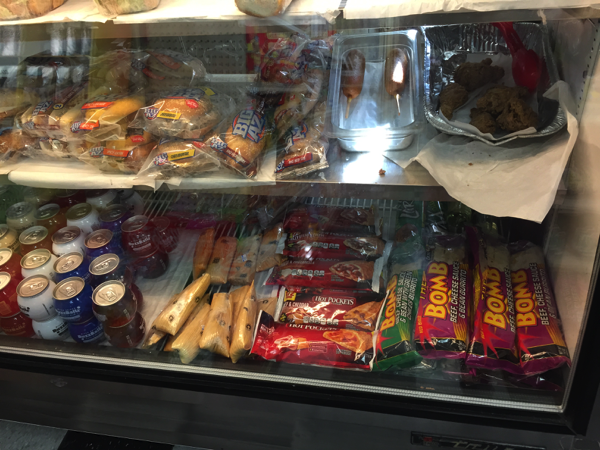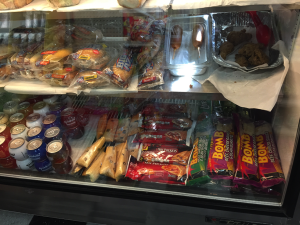Lauren Heumann and Ezra Cohn worked for client San Francisco Department of Public Health on how to bring healthier food to the Tenderloin.
This semester we worked with our partner, the San Francisco Department of Public Health (SFDPH), to think through how to make healthy, affordable, premade meals available in corner stores in the Tenderloin. Many residents depend on these stores for their meals, so we wanted to help identify ways to provide healthy options. In order to refine our understanding of what problem SFDPH would need to solve in order to meet its goal, we visited several corner stores and spoke with storeowners, residents, health inspectors, and other organizations and businesses whose work informed our own.
Through this work, we quickly realized that while our ultimate consumers are the Tenderloin residents, the immediate customers for this work are actually the storeowners, as they sell these items and get them to the residents. Our interactions with these owners provided some of our greatest insights about the realities and limitations (in terms of pricing, expectations, and demand) in this neighborhood. One of our key insights came from speaking with Satwinder (Bill), the owner of Dalda’s Market, a Tenderloin corner store.
Bill sells prepared meals from a refrigerated display case. He then has to heat up these foods individually for each customer in a microwave. This could cost Bill customers if the customers did not want to wait for the food to heat up.
When we first spoke with Bill, he had considered buying a “hot case” to display and sell hot prepared foods. But he had decided not to buy one for two reasons: First, the case would cost him several hundred dollars up front. Second, the health code would require him to throw away any pre-heated foods that did not sell within four hours—which could be quite costly for him.
By the time we came back for a second visit, Bill decided to get a hot case. One of his suppliers had offered to pay for the hot case and provide him with a free short-term supply of their products. For the supplier, the hot case presented an opportunity to hook Bill’s customers on their foods so that Bill would continue to buy those foods from the supplier. For Bill, the deal eliminated the risk involved in buying new infrastructure and provided the opportunity test out new products that his customers might like.
Unfortunately, there’s no guarantee that the foods the supplier will provide are healthy. Indeed, judging by this supplier’s catalog, the offerings will not be. Yet the series of events we observed provided a key lesson for our project and for anyone in the public health sphere who wants storeowners to carry healthier items: storeowners are businessmen. If storeowners have a low-risk opportunity to enhance the store’s infrastructure and build demand for products that they can supply reliably, they will seize that opportunity. More generally, storeowners respond to economic incentives. Public health advocates can thus make headway by aligning their own goals with these economic motivations and incentives of storeowners.
In the context of getting healthy foods into corner stores, public health advocates should seek ways to make healthy foods the profitable choice for storeowners. This could involve:
- Helping stores gain the capacity to provide sample of foods, provided that they use that capability to sample healthy foods.
- Facilitating access to a supply chain for healthier-foods.
- Insuring against risk of poor sales for a limited time period for any new healthy foods that the storeowners introduce.
- Facilitating access to any training that storeowners need in order to sell healthier foods.
The storeowners are comfortable with the products they currently stock. Thus, it is unlikely that storeowners will independently shift toward selling healthier grab-and-go meals with out the financial incentive to do so. Public health advocates and other allies will need to collaborate closely with storeowners and respond toward the owners’ motivations in order to make their vision of healthier corner stores and communities a reality.



